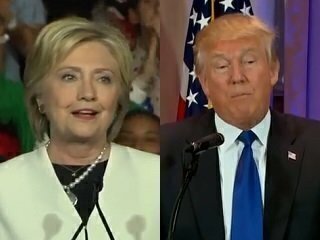The current presidential race’s tone is leading some scholars to look at two important but little-understood parts of our electoral process: protests about vote counting and illegal voting after a presidential contest.
 In recent times, the biggest example of a post-election dispute was in 2000, when the Supreme Court ruling in Bush v. Gore helped to settle a controversy over an automatic recount in Florida that decided the national presidential election.
In recent times, the biggest example of a post-election dispute was in 2000, when the Supreme Court ruling in Bush v. Gore helped to settle a controversy over an automatic recount in Florida that decided the national presidential election.
The initial vote tally was so close in Florida, with a less than 0.5 percent difference between George W. Bush and Al Gore, that a recount started almost immediately. The Supreme Court ruled that different standards were used within Florida counties and that an alternate method couldn’t be used in time for the state’s electoral votes to be certified under federal law.
Edward Foley, a law professor at Ohio State University, has written several recent articles and given several interviews about the history of election disputes. His most recent story on the Politico website explains that post-election controversy isn’t that unprecedented in presidential elections, pointing to examples in 1876, 1884, 1916 and 1960 where the race wasn’t really settled on election night.
In the little-discussed elections of 1884 and 1916, James Blaine and Charles Evans Hughes had to wait two weeks to concede as canvassing commissions examined ballots in key states, Foley said. In the current 2016 race, he also points to a scenario like the 2004 Bush-Kerry contest, where John Kerry waited until the next day to concede because the number of outstanding provisional ballots was greater in Ohio that his margin of defeat to Bush.
“Elections, it must be emphasized, do not end on the last day that ballots are cast and the polls close. They are officially over when the counting of all the ballots has been finally certified,” Foley said.
Today, 43 states allow a losing candidate, a voter, a group of voters or other concerned parties to petition for a recount in some fashion, says the National Conference of State Legislatures. Among 15 current potential swing states or battleground states in the presidential election, only six states have automatic recount provisions based on a close margin in the race: Arizona, Colorado, Florida, Michigan, Ohio and Pennsylvania. Some states allow candidates or interested parties to ask for a recount, if they pay for it. In addition to recounts, most states allow voters to contest election results, based on claims of illegal voting, bad behavior by the vote counters (such as accepting bribes), wrongly counted votes or the ineligibility of a candidate for office.
In Florida, for example, a candidate, voter or voter can contest an election based on claims of the “receipt of a number of illegal votes or rejection of a number of legal votes sufficient to change or place in doubt the result of the election.”
Ohio’s law says that a candidate or a petition signed by at least 25 voters can contest election results, but the contester must post a bond to pay for costs related to settling the dispute. The contester must prove an irregularity happened and it was big enough to affect the election’s outcome. If not, the money is forfeited. Pennsylvania’s law allows for a presidential election to be contested as a “Class II” election under similar circumstances.
What the state laws have in common is that the settlement of the election disputes must happen within the state legal system. And bigger issues are requirements under the Constitution and federal law for states to send their certified list of electors to Congress after the electors meet within each state.
That condensed time frame was a key issue in the Bush v. Gore decision, which saw the unusual circumstance of the United States Supreme Court getting involved in a state-controlled election for federal office. In 2016, those circumstances possibly would be different with the Court evenly divided on ideology.
Under federal law (3 U.S. Code § 5) known as the safe harbor provision, a state must determine its electors six days before the Electoral College members meet in person. In 2016, that deadline is December 13, since the college votes on December 19. Back in 2000, a deeply divided Supreme Court, in a 5-4 vote, wouldn’t allow an extension of the safe harbor deadline proposed by Justice Stephen Breyer in the specific case of Florida’s recount.
Scott Bomboy is the editor in chief of the National Constitution Center.







